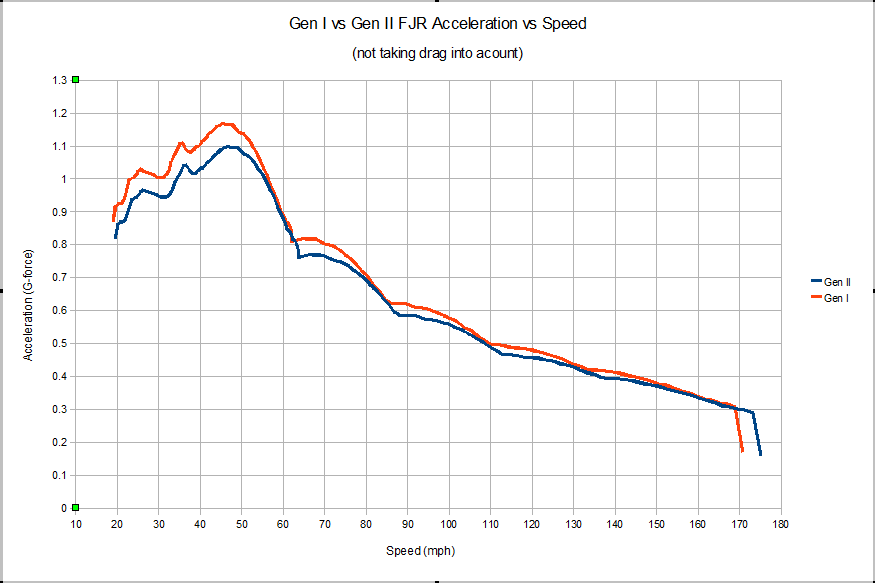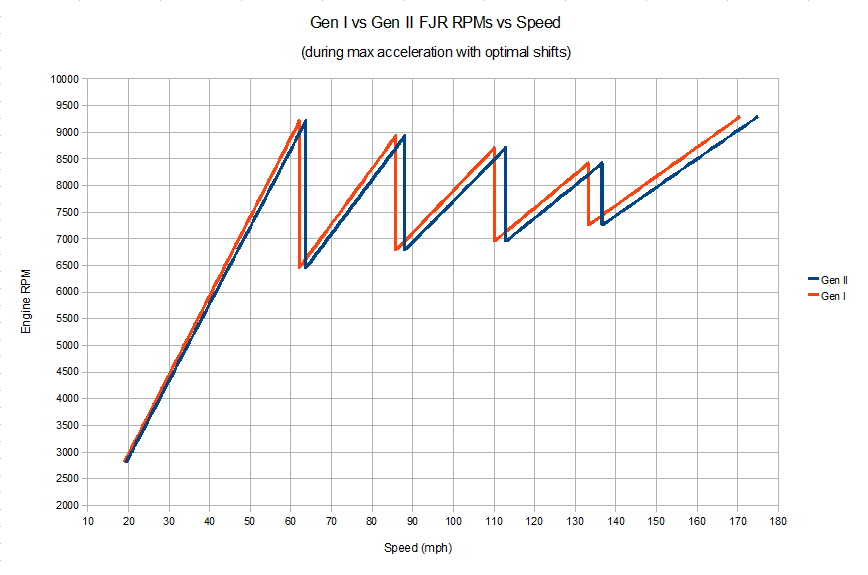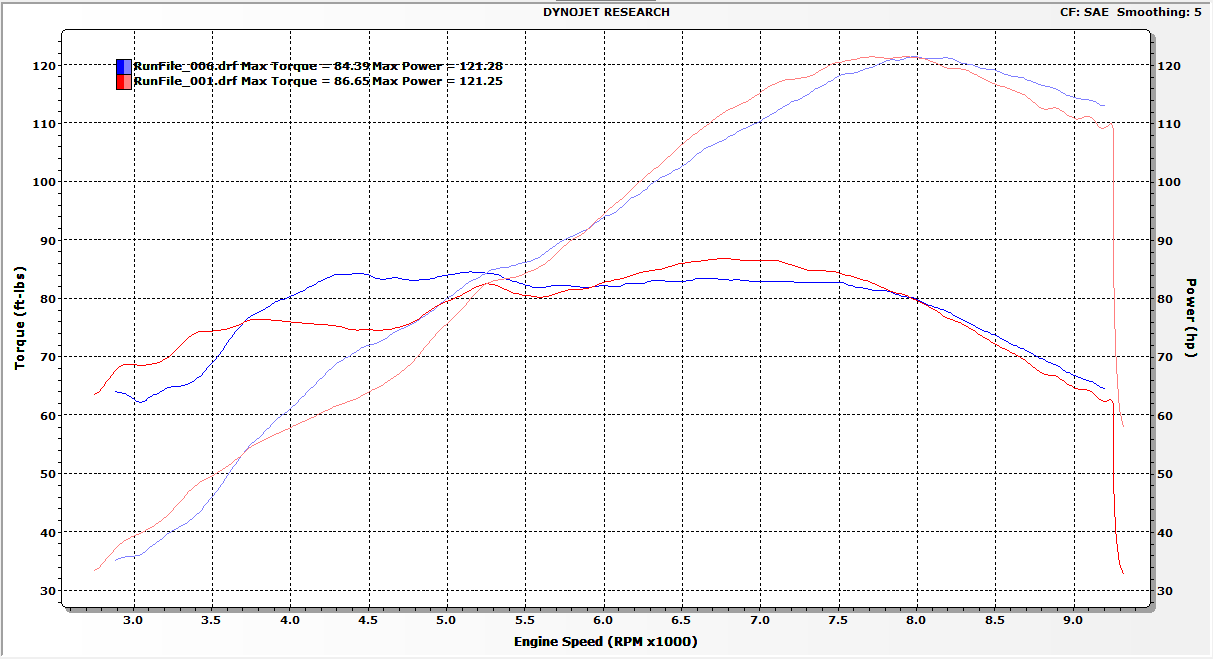The FJR makes more torque at 4k than at 8-9k but no doubt about it, the acceleration is faster at 8k.
Actually, the FJR has more torque at 8k than at 4k, but it is quickly dropping at that point. Looks like 8.4k is the point where the torque drops below the 4k level. So that's why it accelerates faster at 8k than 4k. If you are referencing my dyno chart, make sure you're looking at the torque curve for the stock FJR (my modified FJR actually did have more torque at 4k, and did accelerate harder at 4k than at 8k).
A diesel truck making 800ftlbs isn't going to accelerate very quickly if it can only produce that spinning at 1500rpm; However, it will continue to be capable with a 20,000 pound trailer behind it...
But its acceleration at 1500rpm is still a direct result of the torque at 1500rpm, the gear ratio, and the weight of the truck. The RPM doesn't directly matter for acceleration. Whatever the RPM is, acceleration is a direct result of torque at that RPM, the reduction ratio (transmission, other gears), the size of the wheel (which converts the rotational force to linear force), and the weight of the vehicle. There's air resistance, etc. also, but the point is that the RPM is not involved in figuring out the acceleration at a particular RPM.
Force = Mass * Accel
Accel= Force / Mass
Force = (Tq * [reduction ratio]) / [wheel radius]
Accel = (Tq * [reduction ratio]) / (Mass * [wheel radius])
Physics isn't wrong, no matter how kindly you want to disagree with it.
HP
does depend on RPM. I won't continue discussing the difference between torque and HP, because it's a confusing topic, and it's easy to make statements about one or the other to be true for the other IF you are making certain assumptions or thinking of them within certain contexts (I can't even think of sensible ways to discuss the differences, because there's too many opportunities for miscommunication).
All that really matters is that when looking at a dyno chart, it's the torque curve that directly tells you how hard the bike accelerates throughout the RPM range.
Your graphs of acceleration are so linear it seems to just speak for what a smooth and flat power delivery the FJR has. I can't gather a whole lot else from them - no offense. If you can break them down better I'll listen for sure.
Are you looking at the same graph as me? The acceleration up to 60mph is very non-linear (looks like a jagged mountain). The reason the rest looks so "linear" is because it's only the trailing end of the torque curve for gears 2-5, and also because as you increase the gear ratio to multiply the speed by a certain ratio, you also decrease the torque by the same ratio. This results in a "longer" and "flatter" torque curve when viewed as a graph of torque vs. road speed.
The second graph is simply showing where the shift points are to get that maximum acceleration through all the gears. It shows the RPMs vs road speed IF you were to shift at the exact right spots. Notice that the shift point is not the same for any two gear changes. There's nothing about a dyno chart by itself that can tell you when you should shift for max acceleration.



































































